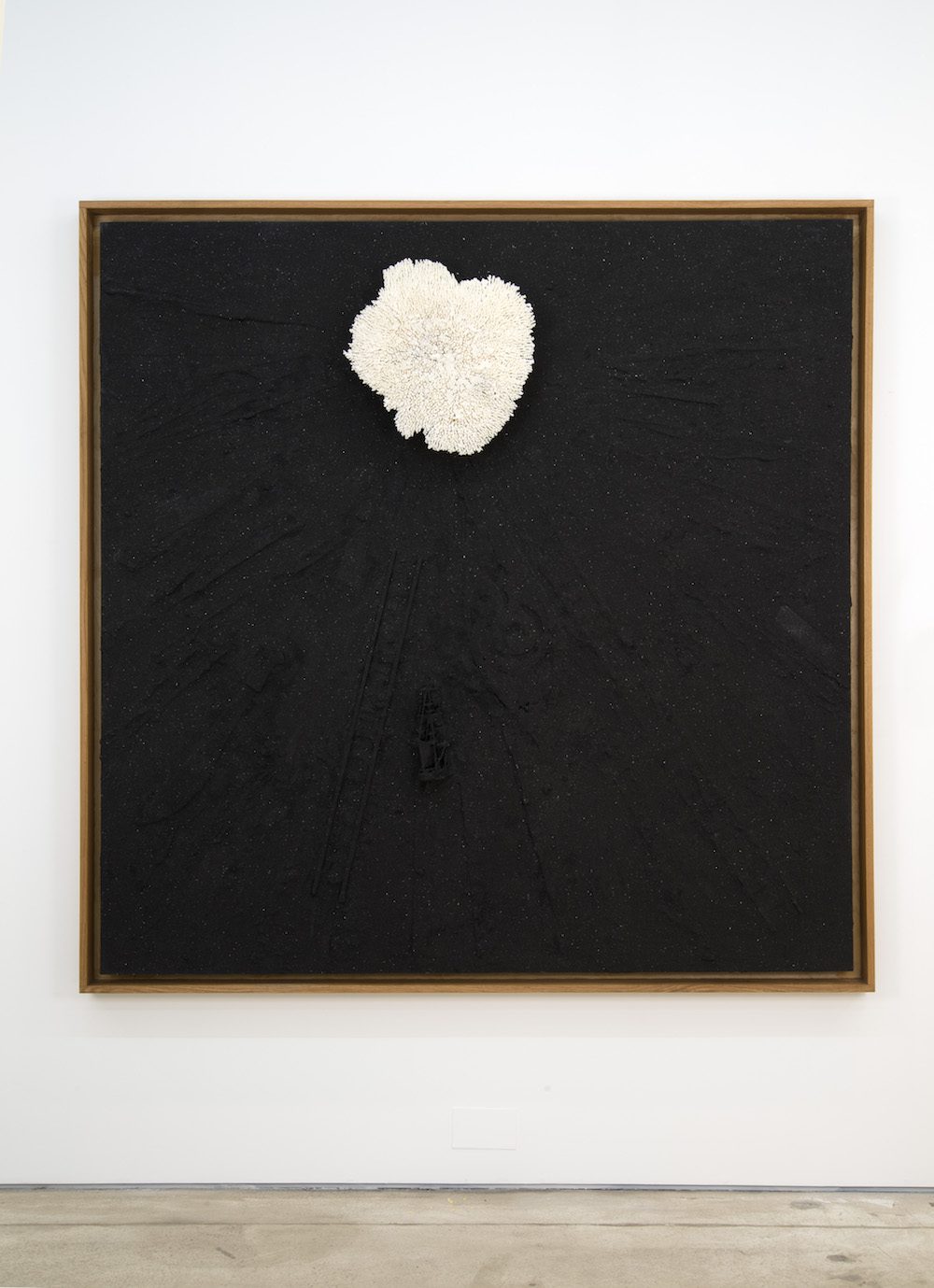Traces of Brutality: Radcliffe Bailey at the Contemporary Arts Center
Rosemary Reyes visits Radcliffe Bailey's "Recent Works" at the Contemporary Arts Center.

Radcliffe Bailey, Clotilde, 2014. Black Sand, wood, coral. Courtesy the artist and Jack Shainman Gallery, New York.
Radcliffe Bailey
Contemporary Arts Center
900 Camp Street
March 7 - June 7, 2015
Occupying the first floor of the Contemporary Arts Center, Radcliffe Bailey’s “Recent Works” is a lesson in the history of blackness in the West—ropes, ships, coral, and cotton carry the material burden of forced migration, of slavery. Windward Coast, 2009, is a mass of piano keys lying exhausted as used matches, while a glittering black head bobs on the surface, on the verge of drowning. The positioning of this installation—the work sits majestically in the corner with the most natural light—tells us it is an important work and, whether or not we actually think so, its weight is palpable. The other “Recent Works,” while not as sprawling, are still large, so the rest of the selection feels cramped, placed in all available corners of the space. Clotilde and Clotilde II, both 2014, hang together, each projecting remnants, traces of brutality via artifacts of labor—a knife, ladders, a sunken slave ship—all submerged under black sand. The bright white of coral and cotton are the only materials to emerge from the blackness, standing out with an undeniable pomposity. Bailey’s final piece in the show (or is it the first?), If Bells Could Talk, 2015, sits in the CAC’s circular alcove separated from the other works. Brass instruments stick out of an antique wooden birdcage, a spontaneous gesture that respectfully honors the defiant strength of jazz, the importance of the horn as a cry of black mourning, and the joyous celebration of New Orleans. Fortunately, it has been given the room to fully breathe.



